Resources
We encourage you to explore these additional resources which consists of organizations, camps, children’s literature, scientific literature, and media targeted to provide various supports and services for children with CHD. Some resources may be beneficial for your family while others are not applicable. This is not a comprehensive list and many other resources may be available. Beginning with this list will help connect you to further content that is applicable for your family.
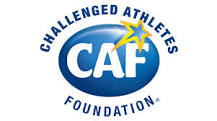
Challenged Athletes Foundation
No challenge is too great with the right support. That’s why our goal is to provide physically challenged people with the tools they need to pursue active and healthy lifestyles. We advocate for all levels of physical activity as a way to enhance quality of life for all. challengedathletes.org

Helping Hands Foundation
Helping Hands Foundations connects families of children with upper limb differences. We have as a continuous goal, to provide support, share experiences and supply information to parents, affected children and their siblings. We choose to focus on the individual child and the challenges they may face. We emphasize their abilities, not their disabilities.
In our support work, we often may inform families of regional services and resources that are available, but we do not endorse any specific institution or medical treatment. One of our priorities is to reach parents of the newborn with an upper limb anomaly. New parents can be given hope and encouragement through our extended network of parents. helpinghandsgroup.org
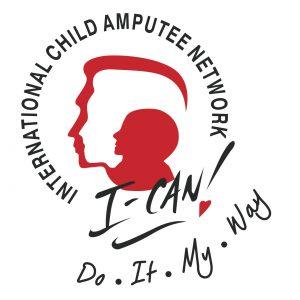
International Child Amputee Network (I-CAN)
International Child Amputee Network (I-CAN) a tax exempt, 501(c)(3) organization, is dedicated to promoting education, support, information, and empowerment to traumatic and congenital limb different children and their families. I-CAN is committed in bringing together these children and their families to enhance the quality of life for the children and young adults based on the concept of mentors helping families, parent helping parents, and kids helping kids. child-amputee.net
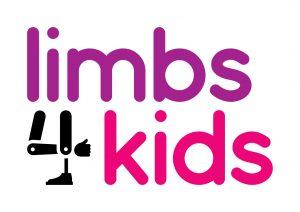
Limbs 4 Kids
Limbs 4 Life is the peak not-for-profit organisation for amputees and people living with limb loss in Australia, with a vision that ‘no one go through the process of limbs loss alone’. Our Limbs 4 Kids program was developed to ensure that all children and young people with limb difference, and all those who care for them, receive access to timely online information via our Limbs 4 Kids website. The Limbs 4 Kids website provides an array of information and resources where family, friends and professionals can learn about the specific health and wellbeing needs of children and young people with limb difference as they move through key social, education and developmental life stages. limbs4kids.org.au
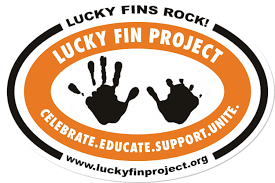
Lucky Fin Project
“A child being born with a limb difference is not tragic. It’s extremely important to show our children how capable & wonderfully made they are. If we treat them as flawed or limited that is who they will believe themselves to be- and that would be the tragedy.” -Molly Stapelman, founder.
The Lucky Fin Project is a 501(c)(3) nonprofit organization that exists to raise awareness and celebrate children and individuals born with symbrachydactyly or other limb differences (upper, lower, congenital, and amputee). luckyfinproject.or
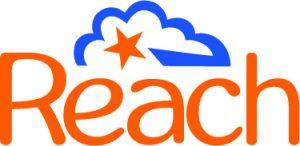
Reach
Reach Charity – Helping children with upper limb differences live life without limits in the United Kingdom. Reach is a friendly, caring place for incredible children and their incredible families. We give support and information to inspire and build confidence. We offer fun activities to encourage Reach children to aim higher, whatever their age or ability. reach.org.uk
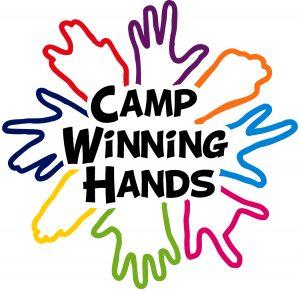
Camp Winning Hands
Camp Winning Hands is an overnight camping experience that provides children and teens with congenital hand differences an opportunity to play and explore in a safe environment in Livermore, California. The camp also supports families by providing education and emotional support through connections with other families. Camp Winning Hands
When reading books with your children consider these Children’s Book Discussion Questions to help your child and your family develop language to talk about the limb difference experience.
Books written by Authors with CHD
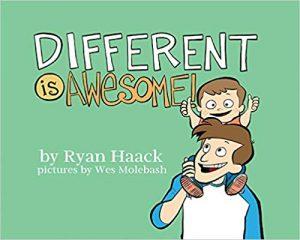
Different is Awesome
Author: Ryan Haack
A little boy brings his older brother, born with one hand, for show-and-tell. The students ask him all sorts of questions about how he does things with one hand and realize that he can do anything they can do, he just does it differently. Along the way, they notice that we’re all different in one way or another, leading to the realization that not only are differences a similarity we all share, but, they are what make us unique – AND AWESOME! livingonehanded.com
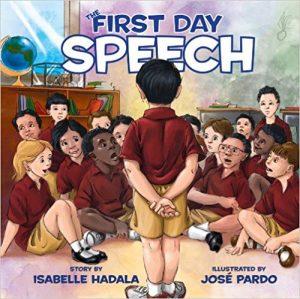
First Day Speech
Author: Isabelle Hadala
Nathan is excited about finally being old enough to go to school, but what will the first day be like? Who will be his friend? He also has a special worry: will the other kids make fun of him? When he practices wearing first-day outfits– going as a pirate, an astronaut, a bank robber– his older brother assures him, “Those won’t do. You have to go as yourself.” Finally, Nathan bravely faces his worries and asks his mother to arrange with his new teacher to allow him to give a speech on the first day of school.
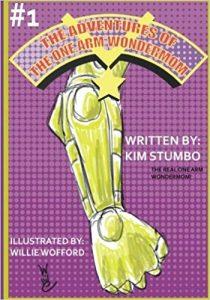
The One Arm Wondermom
Author: Kim Stumbo
Do you ever wish you had superpowers? Well, guess what? YOU DO! Follow Kim “The One Arm Wondermom” and her awesome family as they show off their amazing superpowers! It’s sure to show you how to look within and find
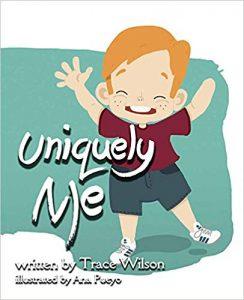
Uniquely Me Series
Author: Trace Wilson
Every child worries about being different. Follow one brave little boy as he embarks on a wild adventure and learns to understand, accept, and love the differences that make him unique. bionicauthor.org
Children’s Literature written by Parents
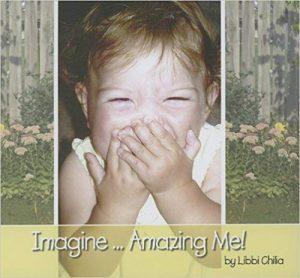
Imagine…Amazing me!
Author: Libby Chilia
Imagine…Amazing Me! will disband any misconceptions about people with disabilities. Within these pages are photos of beautiful children from across the United States nd Canada enjoying childhood activities despite their limb and extremity differences. Imagine…Amazing Me was inspired by Libbi Chilia s daughter Sami, who has a limb deficiency. As Libbi embarked on finding books that featured children like Sami, she came up empty-handed. This discovery drove Libbi to gather photos of children from across the country. As her photo collection grew, Libbi knew that she held the key to portraying a powerful message. Imagine…Amazing Me is reflective and educational.
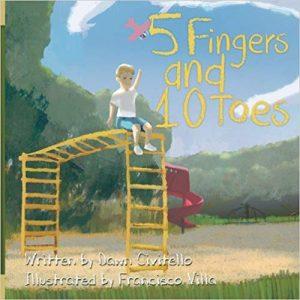
5 Fingers and 10 Toes
Author: Dawn Civitello
A Children’s book written by Dawn Civitello who is a Mom and Teacher. In hopes of spreading awareness to young children and families about limb deficiencies that exist among peers. This book is a great way to explain to children that differences exist and it’s ok to be different, everyone should be accepted for who they are!!
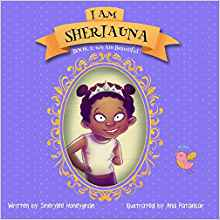
I am Sheriauna
Author: Sherylee Honeyghan
Sheriauna is a vibrant, smart, funny little girl with tons of personality! She has a unique story to share with the world and she loves to help others see differences as strengths. Learn about one little girl’s experience with being different and how we can all be kind to each other, while creating a more inclusive world for everybody. iamsheriauna.ca
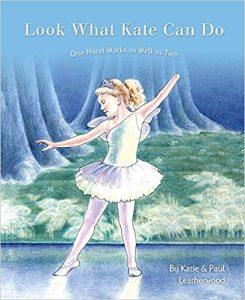
Look What Kate Can Do
Authors: Katie and Paul Leatherwood
Kate was born with symbrachydactyly, a big word for upper limb differences. How does a little girl feel about growing up with one hand? How does she answer people’s questions? Here’s Kate’s story in her own words.
Books Written About Disability and Differences
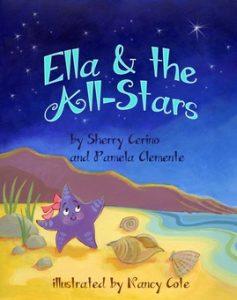
Ella and All the Stars
Authors: Sherry Cerion and Pamela Clemente
Ella and the All-Stars, the first in a collection of Ella’s Way stories, introduces Ella, a young starfish who befriends a group of unusual sea creatures. Through trust and acceptance of differences, Ella learns that friends come in all shapes, sizes, colors and abilities. A colorful, charming and sensitive introduction to diversity and disability in childhood friendships.
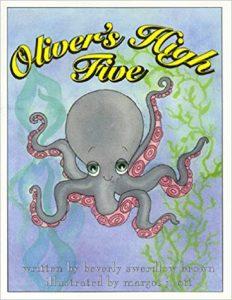
Oliver’s High Five
Author: Beverly Swerdlow Brown
Oliver Octopus only has five arms, but it doesn’t bother him! Young children with any kind of “disability” or “differences” will enjoy reading about Oliver’s adventures above the sea, and how, through his determination and positive attitude, he corrects the misconceptions other people have about physical challenges.
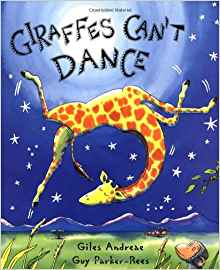
Giraffes Can’t Dance
Author: Giles Andraea
Giraffes Can’t Dance is a touching tale of Gerald the giraffe, who wants nothing more than to dance. With crooked knees and thin legs, it’s harder for a giraffe than you would think. Gerald is finally able to dance to his own tune when he gets some encouraging words from an unlikely friend.
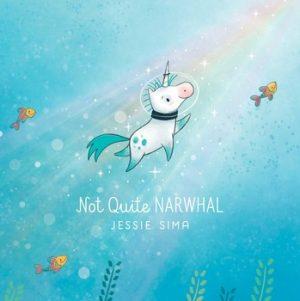
Not Quite Narwal
Author: Jessie Sima
In the tradition of Uni the Unicorn and Gaston, this heartwarming and adorable debut picture book tells the story of a young unicorn who was born under the sea to a family of narwhals. Growing up in the ocean, Kelp has always assumed that he was a narwhal like the rest of his family. Sure, he’s always been a little bit different—his tusk isn’t as long, he’s not as good of a swimmer, and he really doesn’t enjoy the cuisine. Then one night, an extra strong current sweeps Kelp to the surface, where he spots a mysterious creature that looks just like him! Kelp discovers that he and the creature are actually unicorns. The revelation leaves him torn: is he a land narwhal or a sea unicorn? But perhaps, if Kelp is clever, he may find a way to have the best of both worlds.
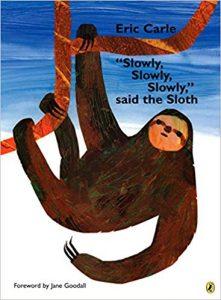
“Slowly Slowly, Slowly” Said the Sloth
Author: Eric Carle
Slowly, slowly, slowly . . . that’s the way the sloth moves. Slowly, it eats and then, slowly, it falls asleep. “What strange kind of creature is this?” the other animals wonder. Why doesn’t it run or fly or play or hunt like the rest of us? “Why are you so slow?” the howler monkey inquires. But the sloth doesn’t answer any questions until the jaguar asks, “Why are you so lazy?” Anyone who has ever felt too busy will appreciate the sloth’s peaceful lifestyle and realize that it’s okay to take time to enjoy life. Eric Carle’ s dazzling collage illustrations introduce readers to the exotic beauty of the Amazon rain forest and the many unusual animals living there.
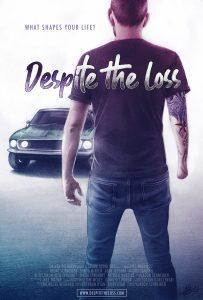
Despite the Loss Documentary
Jason Schneider
In his directorial debut Jason Schneider set out to parallel his own story of overcoming adversity on the racetrack with stories of others like him. His thesis? That amputees don’t see the world through, or buy into, a disabled label. But when an accident forces him to question the very meaning of disability, his sense of self unravels. Through personal accounts, interviews with the people who know him best, and profiles from a diverse group of amputees, Jason dissects and reframes his life, intertwining the trials and tribulations of building a race car with his personal journey for self-acceptance. despitetheloss.com
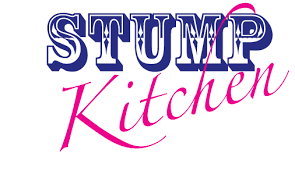
Stump Kitchen Youtube Channel
Alexis Hillyard
Alexis creates a vegan cooking channel, where she showcased ways she uses her stump to cook and insightful and fun conversations on the lives experience of having a limb difference. She recently completed a series of videos interviewing a variety of people with limb differences for Limb Difference Awareness Month (April!). These videos can be seen on her “Limb Difference Awareness and Education” on her YouTube Channel “Stump Kitchen.” Stump Kitchen YouTube Channel
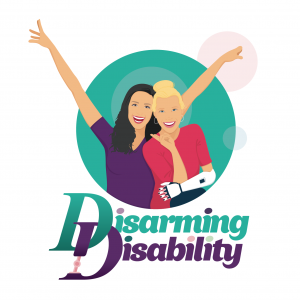
Disarming Disability Podcast
Nicole Kelly and Sarah Tuberty
Disarming Disability’s mission is to deconstruct social stigma for people with disabilities through candid conversations with experience in the field to generate a more understanding and inclusive society. disarmingdisability.com

Social media can be a powerful vehicle for connection and community building. There are a variety of people living with limb differences with their own personal and professional YouTube Channels, Instagram, Facebook, Twitter, Tumbler, Reddit, blog accounts etc. They can be found by searching any of the accounts from our organizations menu. They can also be found by searching general hashtags similar to “#LimbDifference” or “#LimbDifferenceAwareness” or by specific diagnosis such as “#Symbrachydactyly” or “#PolandSyndrome.”
Keep in mind that the accounts may be personal or professional, and content/content appropriateness will vary. Review the accounts and look for the messages that align with your families’ perspective and values. .
Some families use social media platforms, such as Facebook, to create groups. Here parents and people with CHD can provide and receive various supports as needed, parents can share what resources, strategies, and tools worked well for their families. There are a number of groups, each with their own purpose and personality. Try searching “limb different” or “hand different” in social media platforms to find groups, or create your own!
The following is a selection of some of the scientific literature articles used to develop this website. Articles can be found via web searches with article tittle and first author or by pubmed id. We felt this selection provided helpful depth and insight to topics discussed.
The psychological and social impact of disfigurement to the hand in children and adolescents.
Bradbury E1.
The Manor Lodge Consulting Centre, The Alexandra Hospital, Cheadle, Cheshire SK8 2NT, UK. etbpsych@aol.com
Abstract
Hand disfigurement creates potential problems for the developing child. Parental adjustment to the hand is of prime importance in the child’s ability to accept and integrate the disfigurement. Self-consciousness follows a developmental path because of internal and external factors in the child’s development. This paper presents a research study carried out in order to examine the decision-making process in toe-to-hand transfers. 34 families were assessed of whom 27 decided to proceed with surgery following the decision-making process. Factors which influenced that decision included the way the surgeon communicated information. Those who decided against surgery tended to have more positive beliefs about the role of the disfigured hand in the child’s psychological development. The process of decision-making allowed families and the older children to engage in a therapeutic approach.
PMID: 17687987
Mixed feelings of children and adolescents with unilateral congenital below elbow deficiency: an online focus group study.
de Jong IG1, Reinders-Messelink HA, Janssen WG, Poelma MJ, van Wijk I, van der Sluis CK.
Department of Rehabilitation Medicine, University Medical Center Groningen, Groningen, The Netherlands.
Abstract
The existing literature is inconsistent about the psychosocial functioning of children and adolescents with Unilateral Congenital Below Elbow Deficiency (UCBED). The objective of this qualitative study was to explore the psychosocial functioning of children and adolescents with UCBED in terms of their feelings about the deficiency and what helps them to cope with those feelings. Additionally, the perspectives of prosthesis wearers and non-wearers were compared, as were the perspectives of children, adolescents, parents and health professionals. Online focus group interviews were carried out with 42 children and adolescents (aged 8-12, 13-16 and 17-20), 16 parents and 19 health professionals. Questions were asked about psychosocial functioning, activities, participation, prosthetic use or non-use, and rehabilitation care. This study concerned remarks about psychosocial functioning. Children and adolescents with UCBED had mixed feelings about their deficiency. Both negative and positive feelings were often felt simultaneously and mainly depended on the way people in the children’s environment reacted to the deficiency. People staring affected the children negatively, while support from others helped them to cope with the deficiency. Wearing a prosthesis and peer-to-peer contact were also helpful. Non-wearers tended to be more resilient than prosthesis wearers. Wearers wore their prosthesis for cosmetic reasons and to prevent them from negative reactions from the environment. We recommend that rehabilitation teams make parents aware of their great influence on the psychosocial functioning of their child with UCBED, to adjust or extend the currently available psychosocial help, and to encourage peer-to-peer contact.
PMID: 22715362
Coping with congenital hand differences.
Franzblau LE1, Chung KC, Carlozzi N, Chin AY, Nellans KW, Waljee JF.
Ann Arbor, Mich.; and Hempstead, N.Y. From the Section of Plastic Surgery and the Department of Physical Medicine and Rehabilitation, University of Michigan Medical School; and the Department of Orthopaedic Surgery, Hofstra North Shore-Long Island Jewish School of Medicine.
Abstract
BACKGROUND:
Although functional outcomes following reconstruction for congenital hand differences are frequently described, much less is known regarding children’s ability to cope with the psychosocial effects of these conditions. The authors qualitatively explored stress and coping mechanisms among children following reconstructive surgery for congenital hand differences.
METHODS:
Forty patients and their parents participated in semistructured interviews examining children’s stress related to hand functioning and appearance, emotional responses to stress, and coping strategies. Interviews were audio-taped, transcribed, and analyzed thematically. A consensus taxonomy for classifying content evolved from comparisons of coding by two reviewers. Themes expressed by participants were studied for patterns of connection and grouped into broader categories.
RESULTS:
In this sample, 58 percent of children and 40 percent of parents reported stress related to congenital hand differences, attributed to functional deficits (61 percent), hand appearance (27 percent), social interactions (58 percent), and emotional reactions (46 percent). Among the 18 children who reported stress, 43 percent of parents were not aware of the presence of stress. Eight coping strategies emerged, including humor (12 percent), self-acceptance (21 percent), avoidance (27 percent), seeking external support (30 percent), concealment (30 percent), educating others (9 percent), support programs (21 percent), and religion (24 percent).
CONCLUSIONS:
Although children with congenital hand differences often experience emotional stress related to functional limitations and aesthetic deformities, many apply positive coping mechanisms that enhance self-esteem. Clinicians caring for children with congenital hand differences should inform families about potential sources of stress to direct resources toward strengthening coping strategies and support systems.
PMID:25502854
Coping when a child has a disability: exploring the impact of parent-to-parent support.
Kerr SM1, McIntosh JB.
Nursing and Midwifery School, University of Glasgow, Glasgow, UK. s.kerr@clinmed.gla.ac.uk
Abstract
AIM:
To explore the impact of parent-to-parent support when a child is born with a disability.
DESIGN:
The research approach was qualitative. Data were collected retrospectively and were derived from in-depth interviews with parents. The audio-taped interviews were transcribed and then analysed using constant comparative procedures.
SETTING:
Scotland.
PARTICIPANTS:
The parents of 63 children born with a congenital upper limb deficiency.
FINDINGS:
The early weeks and months following the birth of their baby was a difficult and emotional time for most parents. Feelings of isolation were common and there was a lot of concern about what the future would hold. Although a certain amount of support was derived from contact with family, friends and health professionals, parents did not generally obtain the level of support that was required from these sources. Contact with other parents of limb-deficient children, however, clearly exerted a powerful stress-buffering influence, providing much needed emotional, social and practical support.
CONCLUSIONS:
This study suggests that parents of children with special needs are uniquely qualified to help each other. The challenge is to ensure that health professionals are aware of the potential benefits of parent-to-parent support and provide parents with information about appropriate local organizations/ contacts
PMID: 10931070
Strengths, challenges, and relational processes in families of children with congenital upper limb differences.
Murray, Christine E.,Kelley-Soderholm, Erin L.,Murray Jr., Thomas L.
Families, Systems, & Health, Vol 25(3), Sep 2007, 276-292
Congenital upper limb differences are physical health conditions in which an individual is born with abnormalities of the upper limbs (i.e., arms, hands, and/or fingers). This article presents a qualitative study about the unique strengths, challenges, and relationship processes in families of children with congenital upper limb differences. Four in-depth focus groups were conducted with parents of children with congenital upper limb differences. Content analysis procedures were used to analyze the data. The results indicated the following: (a) The strengths and resources of these families included a belief in the human universality of differences, connections with similar families, reliance on a strong social support network, and humor; (b) the challenges the families faced included managing grief-related emotions, making medical decisions, and promoting the child’s development; and © family relationships were affected through the parents’ expression of emotion, opportunities for closeness, and relationships with other family members, such as extended family and siblings. (PsycINFO Database Record © 2016 APA, all rights reserved)
Adjusting to disfigurement: processes involved in dealing with being visibly different.
Thompson A1, Kent G.
Barnsley Community and Priority Services, National Health Service Trust, Keresforth Centre, 11/12 Keresforth Close, Barnsley S70 6RS, UK. ARThompson@eggconnect.net
Abstract
This paper reviews current psychological understandings of the process of adjustment to acquired and congenital disfiguring conditions, such as burns, dermatological diseases, and cleft palate. It is primarily aimed at researchers and clinicians interested in understanding and ameliorating the psychosocial impact of such disfigurements. The literature was accessed using psychological, medical, and nursing databases. The research indicates that the experience of disfigurement is multifaceted, involving individual and societal factors. The adjustment process involves the way that disfigured people interpret their disfigurement, their self, and their encounters with others. These interpretations are likely to be influenced by the interaction between various underlying cognitive self-schemas and the social context. Efficacious interventions provide disfigured people with practical strategies to deal with social encounters and/or tackle underlying cognitive processes. However, many of the studies examined were methodologically limited or uninformed by psychological theory. Future research is needed to gain a better appreciation of the experience of living with a disfigurement and to inform the development of effective clinical interventions. In particular, there is a need for studies using longitudinal and qualitative methologies, as this would foster greater understanding of the psychological and emotional processes involved in adjusting to disfiguring conditions.
PMID:11434225
